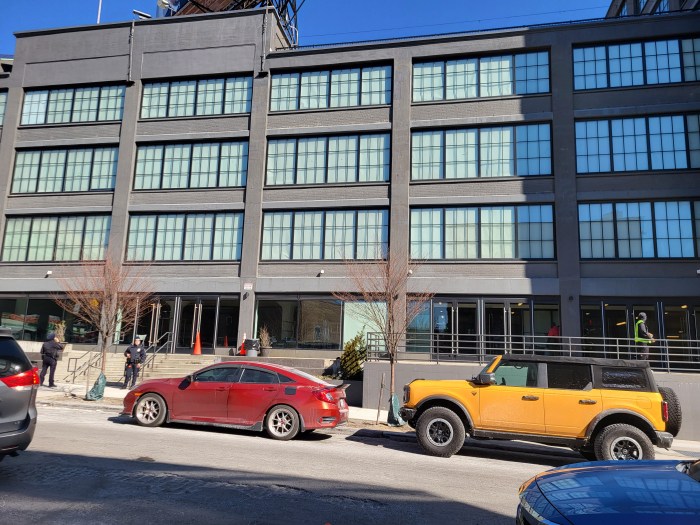
Brian Dubreuil took in Jamaica Bay’s sunrise Wednesday from a landscape that seemed more Alaska than New York.
Nestled in the wheelhouse of the Agnesk, he guided the tugboat slowly through the massive chunks of blue-tinted ice that bobbed sluggishly in the pinkish-grey water of the bay.
“You can see the sun reflect on the buildings,” Dubreuil said, with one hand gently pulling the throttle.
Dubreuil, 42, is the captain of one of just three or four tugboats in the harbor tasked with breaking up ice and clearing a path for smaller vessels, allowing regular water traffic to continue during the winter months. Since the new year, Dubreuil’s employer, Vinik Marine, has been working under contract for the city’s Economic Development Corporation to help clear the waterways for NYC Ferry.
The steady streak of freezing cold days, paired with Thursday’s snowstorm, has created some of the iciest harbor conditions Dubreuil has seen during his 22 years of maritime work in the area. The arctic-like waters have led to the suspension of NYC Ferry’s Rockaway route since Friday, Jan. 5.
“Back in ’95 or ’96, I was working in Bay Ridge. You could pretty much walk over from Bay Ridge or lower Manhattan down to Staten Island,” said Dubreuil, who lives in Bergen County, New Jersey. “The harbor was one sheet of ice.”
The process of disrupting the ice is zen-like. Often beginning before than 4 a.m., Dubreuil plows his tugboat — equipped with two diesel engines and a steel hull — directly into ice at speeds of about 5 mph. Slates of ice, varying from 3-18 inches thick and sometimes as large as 100-feet-long by 100-feet-wide, are broken into smaller pieces. A shift could last 10 hours or more. Sometimes a tugboat will make the same half-mile route back and forth, over and over again, just to clear routes in ice as it forms around bridges.
The ultimate goal is to break up the ice (so that it melts faster) while also positioning it to get swept out to the Atlantic Ocean by the current. The city is paying Vinik Marine $950 an hour for its ice-breaking services.
“Once we get the ice past the Rockaway Point area it has a very, very good chance of not coming back,” said Francis Fata, 22, a deckhand from Whitestone, Queens. “You have a lot of current flowing out to the Narrows from the East River and the Hudson River and that will push the ice out to the Atlantic.”
As Dubreuil navigates southwest from Rockaway, Queens, toward the Marine Parkway-Gil Hodges Memorial Bridge, a collection of tools rests on a small kitchen counter surrounded by instant ramen, doughnuts and chocolate chip cookies. He eyes tracks in a massive sheet of ice — an indicator that two pieces had frozen together after a previous boat had pushed through. It can be hard from the wheelhouse to predict where and how the ice will move, due to difficulty detecting factors such as wind and current.
“On one side of the boat there’s no ice, and the other is full of ice. if the wind changes one way it could blow it all across the bay,” said Dubreuil, who grew up working on fishing boats. “It can change in an hour.”
Even with a warm week such as this, the ice can linger. The city’s EDC is taking Rockaway service day-by-day and can’t commit to when the route will relaunch.
“This is one of the variables. Every day we don’t know what we’re dealing with, so we make the call at 3 or 4 a.m.,” said Stephanie Baez, an EDC spokeswoman. “That’s when we’ll know if we can launch service safely.”
Vinik Marine operates an essentially 24-hour call service for public agencies such as the EDC or private companies looking for tugboat muscle.
“I love it. I might do ice today, or for this week. Next week I might be taking a crane barge in a creek for construction equipment. Maybe there will be something like a fireworks barge on July 4th, stuff like that,” Dubreuil said. “Every day is a different adventure.”




































